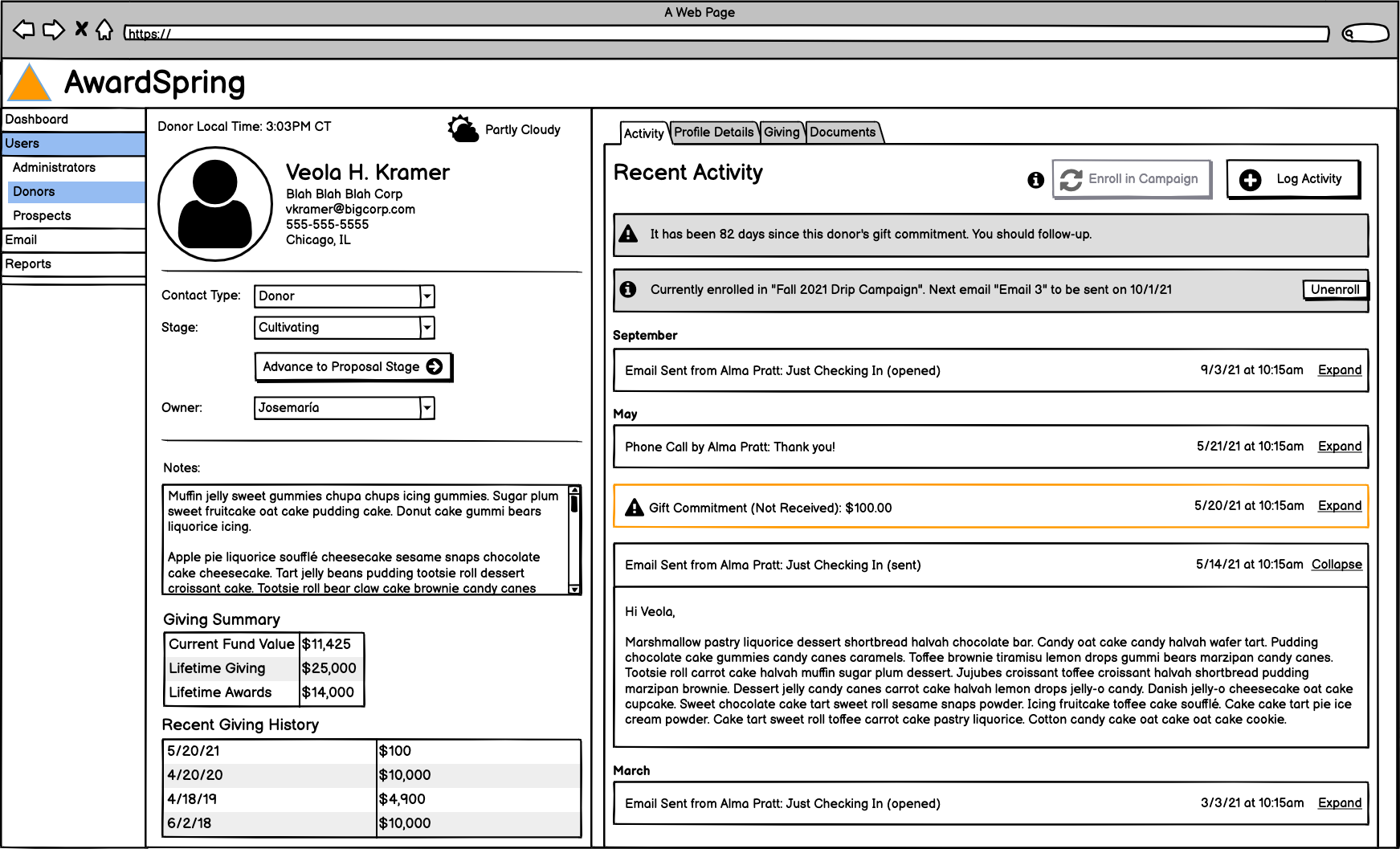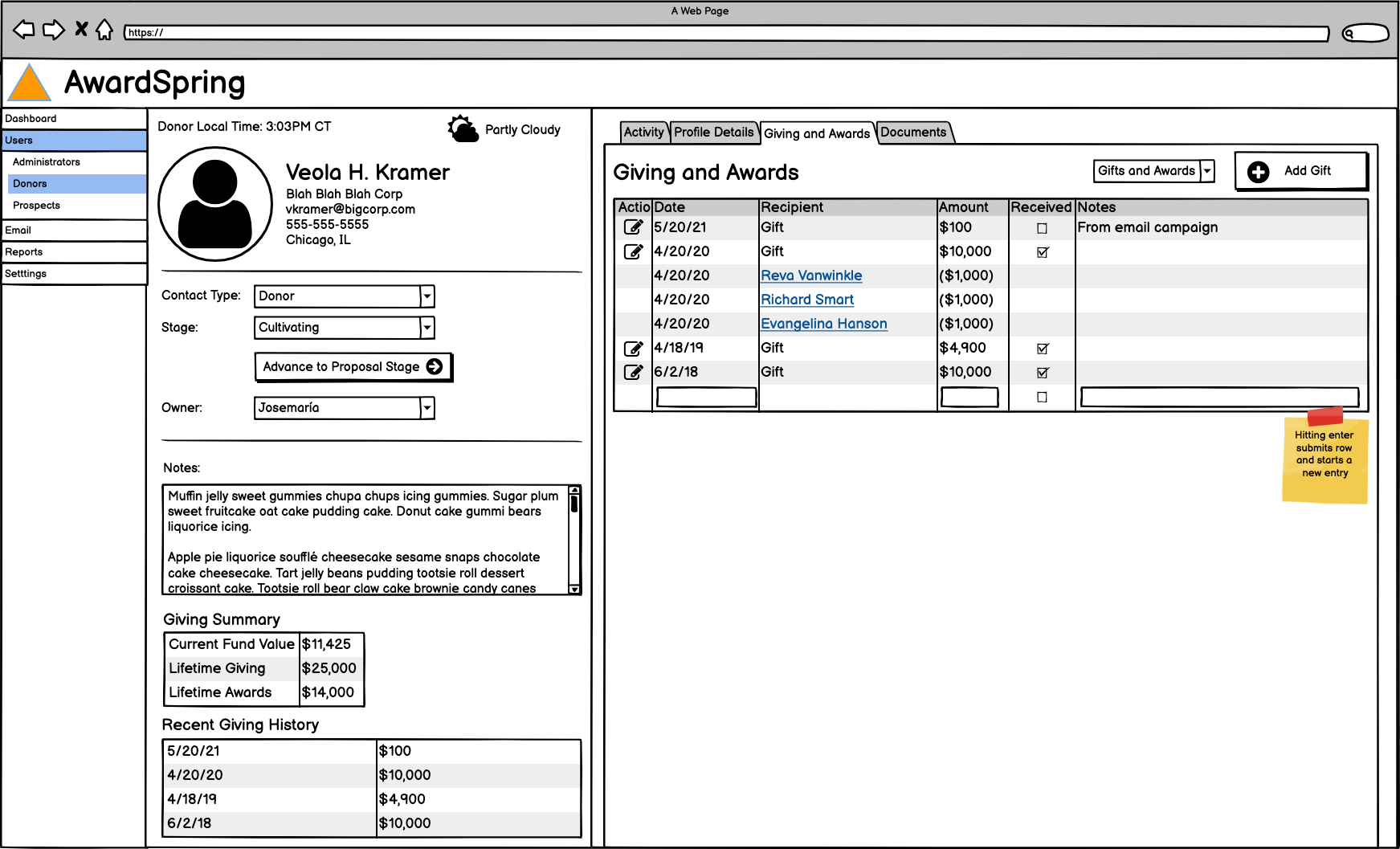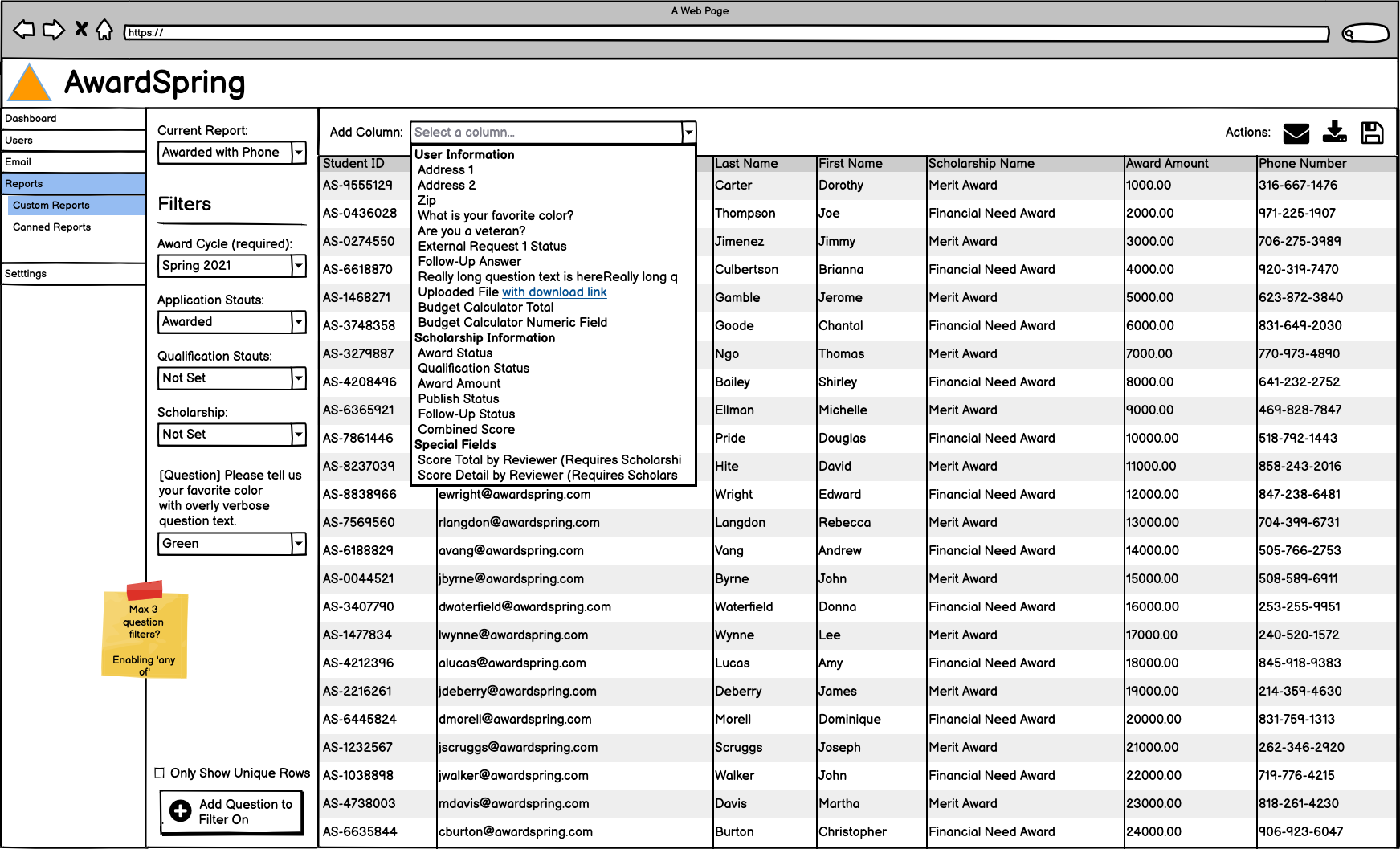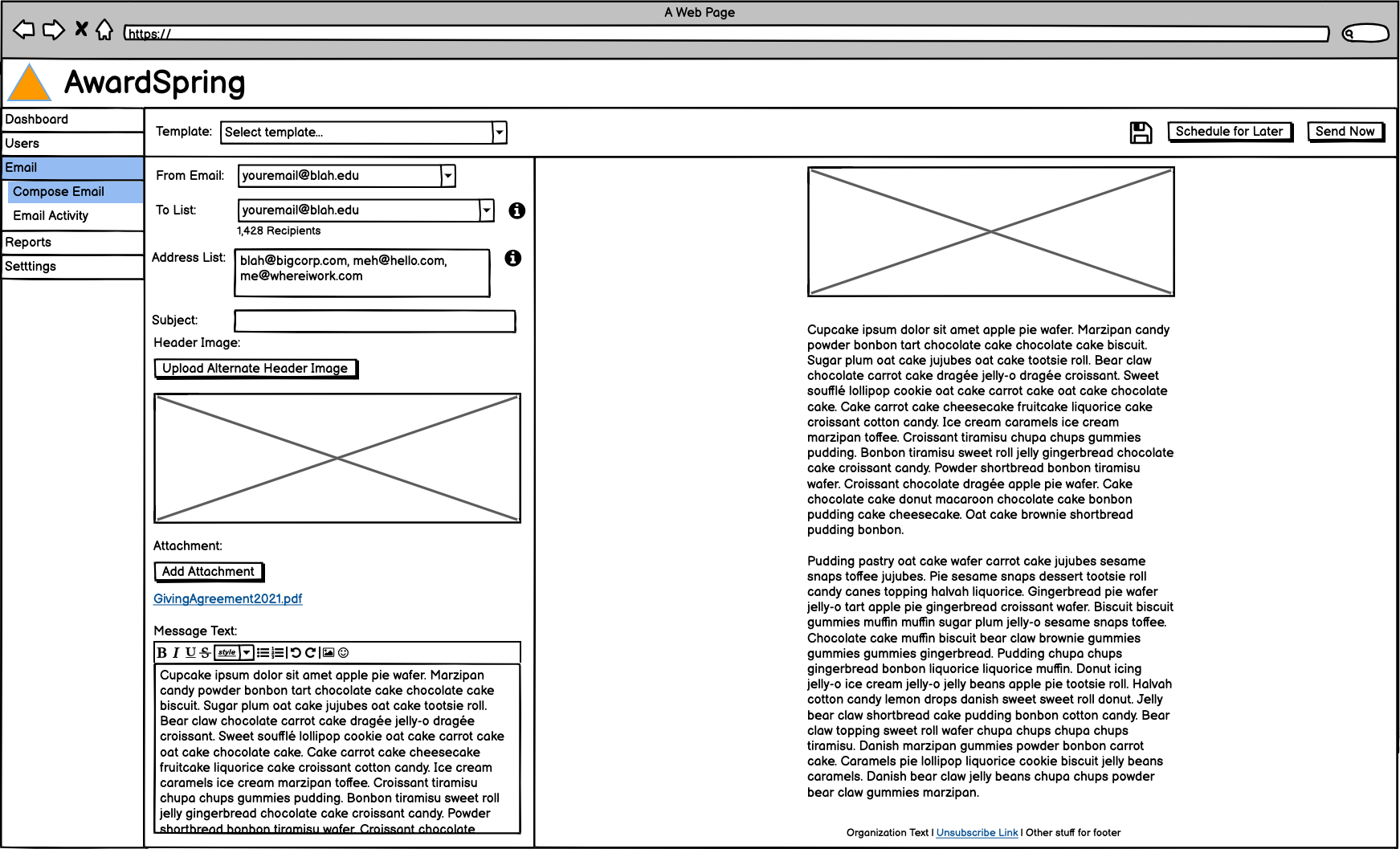Daniel Orofino - Donor Management
daniel at orofino dot me
Chicago, IL
View Resume
I ask that this content only be used in the context of hiring decisions. It is not intended for public distribution.
Introduction
Below is an outline of the work I completed on our donor management project at AwardSpring. It contains broad project thinking, shows the scope of the work, some of the thinking that went into it, and the types of artifacts I generated. I have permission from my previous employer to use all content below for the purposes of my personal portfolio. This functionality has all since shipped to production, largely in alignment with the plan as-outlined.
Scoping
This project was used to secure a round of funding for the business. As a result, we established an MVP scope very early.
The idea for the project was to leverage and expand existing functionality inside AwardSpring such that it could be offered as a stand-alone customer relationship management (CRM) product.
The initial MVP scope was explicitly designed to make heavy use of existing functionality in the AwardSpring scholarship management platform. This would reduce time-to-market and overall project costs.
Initial scope included four primary feature areas:
User Management
Reporting
Communications Tracking
Track Giving
Scope was determined after doing a comprehensive review of existing third-party offerings as well as customer interviews. I then compiled an outline of the proposed scope along with high-level development estimates and presented it to our CEO and VP of Sales.
Once our executive team was on board, I developed a series of early mock-ups for the key areas we would build. This allowed potential investors and internal teams to better understand what we planned to build. Those are visible below.
Finally, I compiled a full presentation that was used as a project overview, it was used by our CEO to develop presentations for investors and myself when explaining the project at a company all-hands meeting. The presentation included:
An overview of the market and key jobs to be done
MVP scope outline with high-level estimates
Staffing plan
High-level project plan and roadmap
Functionality that was not in the MVP, but likely needed after going to market
Initial thoughts on pricing
Key Design Goals
Introduce a full-width design. AwardSpring was originally fixed width, we wanted to remove that limitation. This allowed us to add a third ‘panel’ that could be used to serve multiple new roles:
Present key static account information while allowing the user to browse different detail-level data on the same screen.
Create affordances for filters and report-type selectors while keeping the main body of the page for data display.
Support to inevitable bloat that comes with dynamic user-provisioned fields, while maintaining control of specific key elements to keep the design usable.
Leverage as much of the existing underlying technology as possible. While we introduced many new features, we were able to bring this functionality to market without the need to build basic user profile features, sign-on functionality, or even a new model for activities.
Build functionality that serves our existing scholarship management customers while closing gaps in donor management. Our custom reports feature was architected to allow it to present data for both scholarship management and donor management. This allowed us to deliver on a long-time requested feature for our existing customers while still advancing our MVP for donor management.




